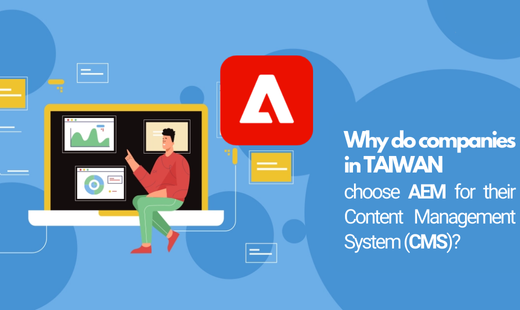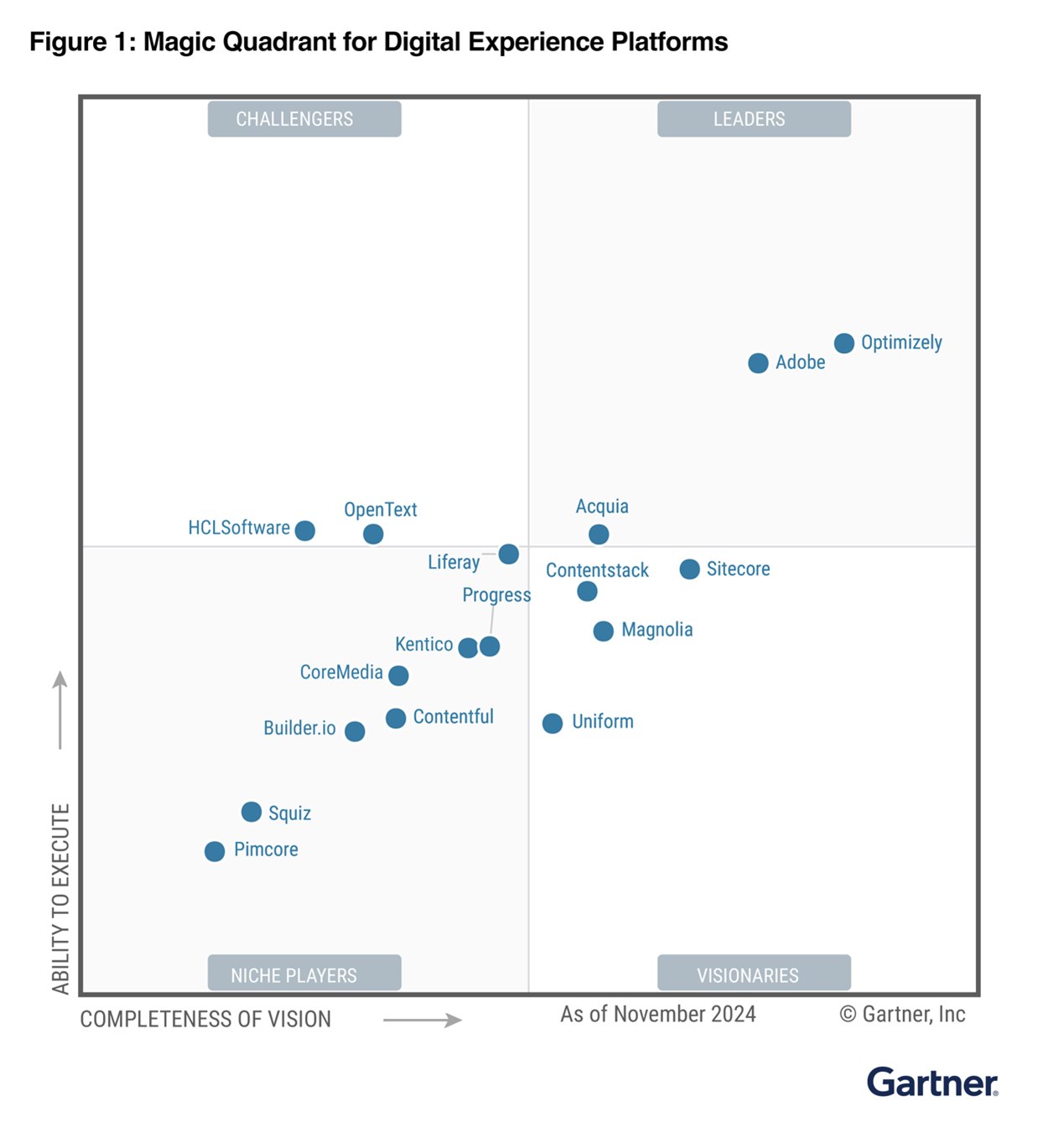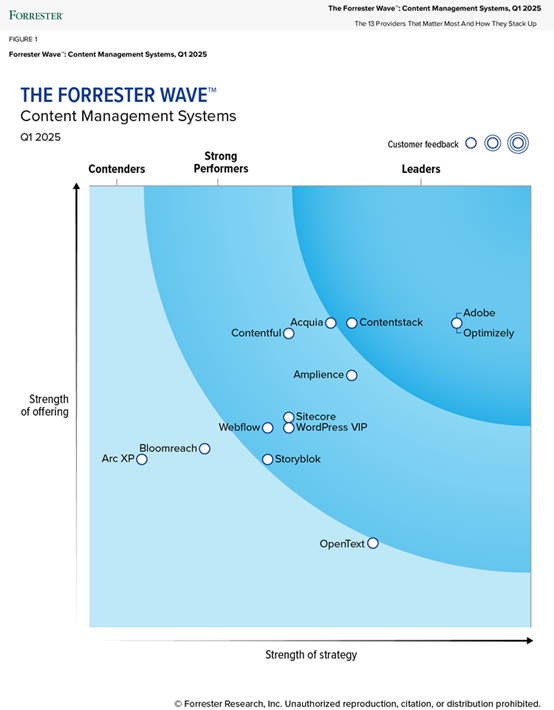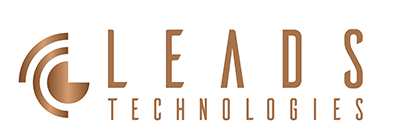
Why AEM is the Preferred CMS for Taiwanese Companies? Key Advantages & Success Stories
AEM Sites
14 November 2024
- Introduction: Why Taiwanese Companies Choose AEM as Their CMS?
- AEM’s Advantages: Core Value for Businesses
- CMS Platform Trends from Third-Party Ratings: AEM Holds a Leading Position
- How Taiwanese Companies Use AEM for Content Personalization and Digital Transformation
- AEM Success Stories in Taiwan
- Comparison with Other CMS Systems: Why Choose AEM?
- Challenges Faced by Taiwanese Companies and How AEM Helps Solve Them
- Conclusion: AEM Lays the Foundation for the Digital Future of Taiwanese Companies
- References
- Introduction: Why Taiwanese Companies Choose AEM as Their CMS?
- AEM’s Advantages: Core Value for Businesses
- CMS Platform Trends from Third-Party Ratings: AEM Holds a Leading Position
- How Taiwanese Companies Use AEM for Content Personalization and Digital Transformation
- AEM Success Stories in Taiwan
- Comparison with Other CMS Systems: Why Choose AEM?
- Challenges Faced by Taiwanese Companies and How AEM Helps Solve Them
- Conclusion: AEM Lays the Foundation for the Digital Future of Taiwanese Companies
- References
1. Introduction: Why Taiwanese Companies Choose AEM as Their CMS?
With the acceleration of digital transformation, Taiwanese companies are increasingly prioritizing the selection of a powerful and flexible Content Management System (CMS) to support their business development. Among numerous CMS options, Adobe Experience Manager (AEM) has become the preferred choice for many leading Taiwanese enterprises. This is primarily due to AEM’s ability to offer rich functionalities that help businesses improve content creation efficiency, achieve website and marketing campaign personalization, and enhance customer experiences.
AEM is not only an efficient content management platform but also enables unified management of cross-platform content, centralized digital asset management, and supports multilingual and multi-regional needs. These features allow Taiwanese companies to respond more flexibly and quickly to increasingly complex market demands. Additionally, seamless integration with other Adobe Experience Cloud products provides Taiwanese companies with significant advantages in digital marketing and data analytics.
This article will delve into why Taiwanese companies choose AEM as their CMS, introduce the value and changes AEM brings to businesses, and help companies manage content more effectively, enhance customer experiences, and stand out in a competitive market.
2. AEM’s Advantages: Core Value for Businesses

1. Multilingual and Cross-Regional Content Management
AEM provides powerful multilingual and regionalized content management capabilities, supporting quick translation and seamless version switching. This enables businesses to easily manage websites across multiple markets, enhancing flexibility and efficiency in global expansion.
2. Security and Compliance Assurance
AEM features robust identity verification and permission control mechanisms, meeting the requirements of international and local regulations such as GDPR and PDPO. This ensures that businesses can handle sensitive data and personal information securely and in compliance with regulations.
3. Seamless Integration with Enterprise IT Systems AEM supports seamless integration with various enterprise
AEM supports standard service architectures such as RESTful API, GraphQL, and OSGi, allowing for easy integration with internal systems like CRM, ERP, and e-commerce platforms. This enables data synchronization and process automation, enhancing overall operational efficiency.
4. Efficient Content Collaboration and Review Processes
By leveraging flexible content workflows, AEM enables effective collaboration and approval processes among marketing, legal, IT, and other departments. This accelerates content deployment and ensures compliance with brand standards and regulatory requirements.

5. Ability to Expand into Overseas and Mainland China Markets
AEM provides optimized multi-region content delivery capabilities, including CDN acceleration, localized deployment, and data storage compliance (such as ICP licensing and data residency requirements in China), helping businesses smoothly expand into overseas and mainland China markets with improved speed and consistent cross-border experiences.

6. Outstanding Performance and Scalability
Whether for high-traffic events or daily operations, AEM delivers stable, fast, and scalable website performance, helping businesses handle peak traffic and ensuring uninterrupted user experiences.
3. CMS Platform Trends from Third-Party Ratings: AEM Holds a Leading Position
When selecting an enterprise-level Content Management System (CMS), many companies refer to evaluation reports from internationally recognized research institutions such as Gartner and Forrester. These reports provide objective comparisons of major global CMS solutions based on multiple criteria including “execution,” “vision completeness,” “product strategy,” and “market feedback.”
3.1 Gartner 2024 Magic Quadrant: Adobe Leads in the ‘Leaders’ Quadrant

According to Gartner’s “Magic Quadrant for Digital Experience Platforms 2024” report, Adobe (AEM) once again firmly holds the top position in the “Leaders” quadrant, demonstrating its leadership in both “vision completeness” and “execution capability.”
Besides Adobe, Optimizely is also listed as a leader, but AEM has a clear advantage in overall strategy and feature integration. Sitecore and Magnolia are categorized as “Visionaries” due to their forward-looking vision, but they lag behind Adobe in execution.
3.2 Forrester 2025 Wave: Adobe and Optimizely Lead the Market

In Forrester’s “The Forrester Wave: Content Management Systems, Q1 2025” report, Adobe is also placed in the “Leaders” quadrant, excelling in both “product strength” and “strategy completeness.” Consistent with the Gartner report, Adobe is the only CMS platform ranked at the top in both evaluations.
Notably, Sitecore is categorized as a “Strong Performer” in this report, while OpenText falls into the “Contenders” quadrant, indicating room for improvement in product strategy or user feedback.
3.3 Summary of Leading Platform Advantages: Why AEM Stands Out
From these two authoritative third-party reports, it is evident that AEM continues to lead in the “Leaders” quadrant due to several key factors:
- Integrated Platform Capabilities: AEM not only offers CMS features but also integrates complete modules like DAM (Digital Asset Management), personalized marketing, form management, and Headless API.
- Strong Enterprise Ecosystem Support: The Adobe Experience Cloud ecosystem combines products like Adobe Analytics, Target, and Campaign to deliver consistent cross-channel experiences.
- Highly Flexible Cloud Architecture: AEM as a Cloud Service uses microservices and auto-scaling design, balancing security and availability, making it highly trusted by large enterprises.
- Positive Market Feedback and Continuous Innovation: Adobe is highly praised for both customer satisfaction and the speed of technological innovation.
In summary, for Taiwanese companies that prioritize stability, scalability, and long-term investment benefits, Adobe AEM is currently one of the most strategically valuable CMS choices.
4. How Taiwanese Companies Use AEM for Content Personalization and Digital Transformation
As digital experiences become the primary means for consumers to engage with brands, Taiwanese companies are actively leveraging Adobe Experience Manager (AEM) to drive content personalization and digital transformation, enhancing customer satisfaction and market competitiveness.
1. Achieving Real-Time Content Personalization with AEM
AEM features built-in intelligent content recommendation and personalization capabilities, dynamically presenting the most relevant content based on user behavior, location, device type, and preferences. Businesses can set up personalized experiences for different audience segments, such as displaying different promotional activities for first-time visitors versus returning users, thereby increasing conversion rates and engagement.
2. Integrating Data to Deliver Consistent Cross-Channel Experiences
By integrating AEM with other Adobe Experience Cloud products (such as Adobe Target and Adobe Analytics), businesses can capture customer data in real-time and deliver consistent, personalized interactions across websites, mobile devices, and social platforms. This enhances brand recognition and strengthens customer engagement.
3. Accelerating Content Production and Publishing Processes
AEM's modular content management (Content Fragments, Experience Fragments) allows marketing teams to quickly create, manage, and reuse content, reducing dependency on the IT department. This significantly shortens the time from content creation to going live, enhancing the speed of market response.
4. Supporting Multi-Language and Regional Market Personalization
For the needs of the local Taiwan market, AEM supports the rapid creation and management of multi-language versions and can automatically roll out customized content based on regional characteristics (such as regional promotions, festival activities). This helps businesses better reach both local and international customers.
5. Promoting Flexibility and Scalability for Digital Transformation
AEM offers cloud deployment options and supports a Headless CMS architecture (API-driven content delivery), enabling businesses to rapidly expand to new digital touchpoints such as mobile apps, smart devices, and third-party platforms. This enhances overall digital operation capabilities.
6. Enhancing Customer Journey Analytics and Optimization
By combining AEM's content management with Adobe Experience Platform's data integration capabilities, businesses can comprehensively capture customer journey data. This allows for real-time analysis of experience performance, enabling continuous optimization of content strategies and customer journey design, driving sustained business growth.
5. AEM Success Stories in Taiwan
As Taiwanese companies actively invest in digital transformation, more and more leading brands are choosing Adobe Experience Manager (AEM) to build high-performance, high-experience digital platforms. Below are several representative application scenarios that demonstrate the real-world effectiveness of AEM in the Taiwanese market:

1. Financial Industry: Building a Secure, Consistent Multi-Channel Digital Experience
A major bank in Taiwan utilized AEM to revamp its official website and mobile banking interface, integrating content management for both web and app platforms. By incorporating a personalized recommendation engine, the bank increased the conversion rate of online applications for financial products. Additionally, through AEM’s permission management and compliance features, the bank ensured adherence to local and international cybersecurity regulations (such as GDPR and PDPO).

2. Technology Manufacturing: Accelerating Product Launches and Global Market Expansion
A renowned technology manufacturer adopted AEM to centrally manage over 30 regional websites. By leveraging multi-language and regional version synchronization management, the company significantly reduced the time needed for new product launches. Integrating data from Adobe Analytics, the company can quickly tailor content for different markets, increasing engagement and inquiry rates among overseas customers.

3. Retail and E-commerce: Enhancing Personalized Marketing and Member Engagement
A major retail chain brand leveraged the integration of AEM and Adobe Target to deliver personalized content on the homepage, promotional pages, and member-exclusive areas. By automatically adjusting content based on member behavior, the brand successfully increased return visits by more than 25% and effectively promoted the integration of online and offline sales.
6. AEM vs Other CMS Systems: Why Choose AEM?
When choosing a Content Management System (CMS), common options for Taiwanese companies include AEM (Adobe Experience Manager), Sitecore, WordPress Enterprise, and Magnolia. Below are several key aspects that explain why AEM is increasingly becoming the preferred choice:
1. Content Personalization Capabilities
- AEM: Native integration with Adobe Target and Adobe Analytics supports real-time content personalization and precise audience segmentation, delivering optimized experiences for different customers.
- Sitecore: Offers personalization features but often requires more customization and configuration, leading to higher costs and technical barriers.
- WordPress Enterprise: Relies on third-party plugins for personalization, resulting in weaker integration and real-time capabilities.
- Magnolia: Provides basic personalization features but requires additional integration of analytics tools for advanced personalization.
2. Digital Asset Management (DAM)
- AEM: Includes a powerful Digital Asset Management system (AEM Assets) supporting asset search, version control, automatic conversion, and smart tagging, significantly improving content production and usage efficiency.
- Sitecore, WordPress, Magnolia: Typically require purchasing or integrating third-party DAM tools, which do not offer the same level of functionality as AEM’s native solution.
3. Multi-Site and Multi-Language Management Capabilities
- AEM: Through Multi-Site Manager (MSM), it centrally manages multiple sites and language versions, automating content synchronization and regional adjustments, making it particularly suitable for businesses looking to expand into overseas and mainland China markets.
- Sitecore: Supports multi-site and multi-language but involves more complex setup and higher maintenance costs.
- WordPress: Supports multi-language but requires additional plugins for multi-site management, leading to weaker integration.
- Magnolia: Offers some multi-language support but has a less smooth user experience compared to AEM.
4. System Scalability and Integration Capabilities
- AEM: Based on a modern cloud architecture (AEM as a Cloud Service), it supports API integration and headless CMS mode, allowing flexible expansion to apps, IoT, and other emerging digital touchpoints.
- Sitecore: Also supports headless CMS but has a relatively complex cloud migration and upgrade process.
- WordPress, Magnolia: Limited scalability, suitable for small to medium-sized websites or simpler content needs.
5. Security and Compliance
- AEM: Complies with various international and regional standards (such as GDPR, PDPO) and includes comprehensive permission and content review mechanisms, making it ideal for enterprises with high security and compliance requirements.
- Sitecore, WordPress, Magnolia: While supporting basic security settings, additional development and reinforcement are typically required to meet the stringent standards of finance, healthcare, and public institutions.
7. Challenges Faced by Taiwanese Enterprises and How AEM Can Help
During the digital transformation process, Taiwanese companies often encounter challenges in content management, technology integration, and customer experience optimization. Adobe Experience Manager (AEM), with its flexible and powerful features, becomes an essential tool to help companies overcome bottlenecks and accelerate growth.

1. Rapid growth in content volume makes management and updates difficult
Challenge:
With the increase of digital channels (such as websites, Apps, social platforms), there has been an explosive growth in content volume, leading to complex management, version confusion, slow updates, and impacting the efficiency of marketing promotions.
AEM Solution:
AEM's modular content management (Content Fragment, Experience Fragment) and central asset repository (DAM) functionalities help enterprises efficiently manage multi-channel content, achieve content reuse and rapid updates, thereby significantly enhancing operational efficiency.

2. Difficulties in Expanding to Multiple Languages and Regional Markets
Challenge:
Taiwanese companies are actively expanding into overseas and mainland China markets, but maintaining multi-language and multi-region versions of content is time-consuming, labor-intensive, and prone to errors.
AEM Solution:
With AEM's Multi-Site Manager (MSM), enterprises can centrally manage global site content, automate the push of regional version content, and simultaneously support region-specific adjustment needs (such as China's ICP requirements), effectively accelerating deployment in international markets.
3. Lack of Consistent and Personalized Customer Experiences
Challenge:
Companies often face inconsistencies in customer experience across different platforms due to independent operations of each channel, which reduces brand affinity and conversion rates.
AEM Solution:
AEM integrates with Adobe Target and Adobe Analytics to dynamically push personalized content based on user behavior, interests, and geographical location, ensuring a consistent and tailored customer experience across websites, Apps, Email, and other channels.

4. Technical Challenges in System Integration and Flexible Scalability
Challenge:
The existing IT architecture is outdated and lacks flexibility, making it difficult to quickly integrate with emerging technologies such as headless CMS, IoT, and smart device integration.
AEM Solution:
AEM is based on a modern cloud architecture (AEM as a Cloud Service) and supports API-driven headless content delivery (Headless CMS), enabling enterprises to rapidly connect with various emerging platforms and devices, and flexibly respond to future changes.
5. Increased Pressure on Information Security and Compliance
Challenge:
Facing requirements such as GDPR, PDPO, and China's data compliance regulations, companies must enhance data protection and usage policies, or they risk heavy fines and a crisis of brand trust.
AEM Solution:
AEM has built-in comprehensive security mechanisms and permission management features, supporting data encryption, access control, and activity log tracking, to help companies meet regulatory requirements and protect customer data security.
8. Conclusion: AEM Lays the Foundation for the Digital Future of Taiwanese Enterprises
In today’s rapidly developing digital economy, Taiwanese enterprises are faced with higher customer expectations, faster market changes, and stricter compliance requirements. To continuously grow and maintain competitiveness in such an environment, choosing a powerful and flexible Content Management System (CMS) becomes crucial.
Adobe Experience Manager (AEM), with its leading content personalization capabilities, robust multilingual and multi-regional management functions, integrated Digital Asset Management (DAM), superior system scalability, and comprehensive security measures, not only helps companies solve existing challenges but also paves the way for future digital growth.
Whether it’s through AEM Sites to create high-performance, personalized corporate websites or using AEM Assets to effectively manage vast digital assets, AEM can be a solid support for enterprise digital transformation, helping businesses enhance operational efficiency and customer experience, and expand local and overseas markets.
If your company is looking for a digital solution that supports long-term development and flexibly responds to market changes, now is the perfect time to learn about and implement AEM.
👉 Learn more about how Leads Technologies can assist you in digital transformation
9. References
- Gartner Magic Quadrant for Digital Experience Platforms (November 2024)
https://www.magnolia-cms.com/library/analyst-reports/gartner-magic-quadrant-for-digital-experience-platforms.html - The Forrester Wave™: Content Management Systems, Q1 2025
https://business.adobe.com/resources/reports/forrester-wave-content-management-systems-2025.html - Official Introduction of Adobe Experience Manager
https://business.adobe.com/products/experience-manager/adobe-experience-manager.html - Leads Technologies Official Website: AEM Case Studies and Technical Blogs
https://www.leads-technologies.com/en/blogs/why-do-companies-in-taiwan-choose-aem-for-their-content-management-system-cms/ - Adobe Experience Cloud Learning Resource Center
https://experienceleague.adobe.com/ - What is a Content Management System (CMS)? Understand Core Concepts and Applications in One Article
https://www.leads-technologies.com/en/blogs/what-is-content-management-system-cms/


